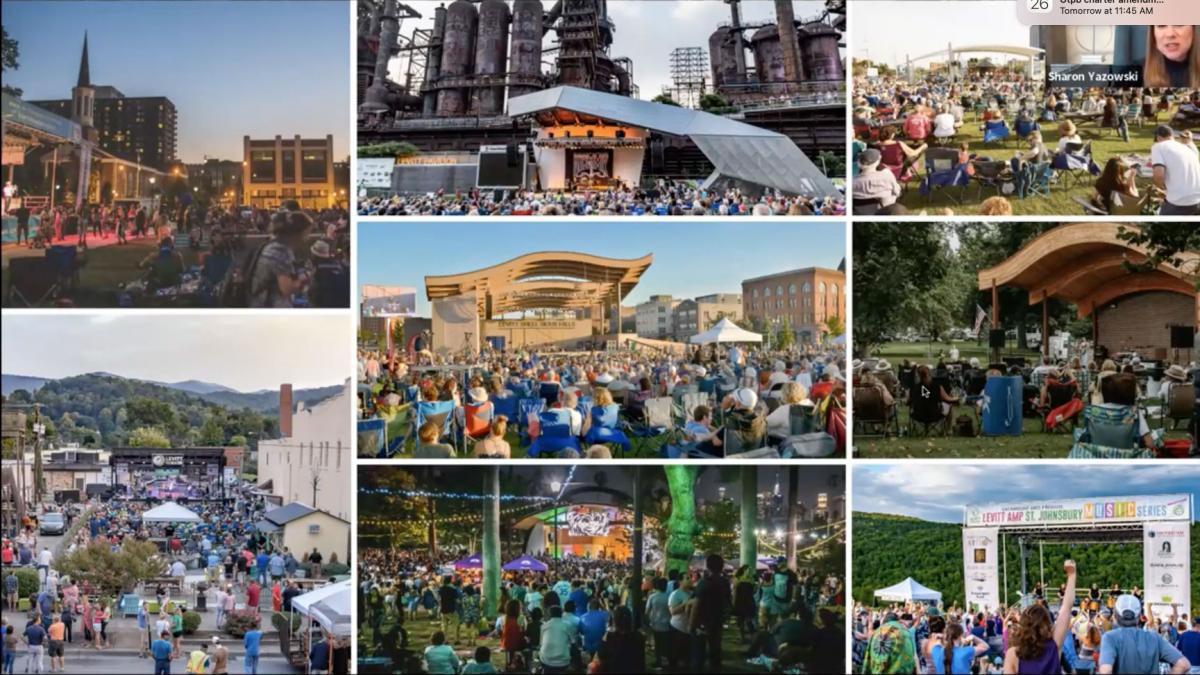
How ‘creative placemaking’ enhances a sense of place
“Creative placemaking” requires rethinking the artist's role and relationship to art, according to Dayton Castleman, an artist based in Northwest Arkansas. Many artists have what Castleman calls a “white cube” mindset, a reference to a room in a gallery or studio with white walls, where the inspiration comes entirely from the internal emotions and thoughts of the artist.
Instead, art for placemaking purposes demands a “focus on the space and the people associated with the space as the driver of the form and content of the work, not the artist's internal life,” says Castleman, who is Director of Creative Placemaking for Verdant Studios based in Rogers, Arkansas. He explains that the artist has to think of the art as a bridge builder and a translator for the space.
During an On the Park Bench webinar on Creative Placemaking Through Art and Music, Castleman was joined by Levitt Foundation CEO Sharon Yazowski, who explained how public spaces can be reinvigorated through free, live music. Levitt has funded performance venues in 40-plus small-to-mid-size cities and towns coast to coast.

“We partner with local communities to activate underused public spaces,” says Yazowski, noting that the concert venues previously consisted of barren, under-activated public spaces. All concerts are free, with performances by artists from multiple genres that reflect the community. Events occur in open lawn settings with no permanent seating—by design. The lawn activation creates a sense of place and promotes what she calls social friction. Groups and individuals of all kinds informally rub elbows. The lawn is also a multipurpose space—when it is not used for performances, community members can use it for active recreation.
She explains that the overarching goal is to create social capital, contributing to social cohesion, public safety, better health, and economic stability. Levitt partners with nonprofits like downtown coalitions, affordable housing institutions, and arts organizations.
Castleman focuses on the visual arts, while Yazowski deals mostly with music. But the idea is similar. “How you think, feel, and act responds to the environment,” explains Castleman. “Art can be the connective tissue between the individual and place.” See the whole webinar:




